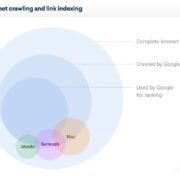Business Intelligence (BI) is undoubtedly an essential component in today’s digital business world and is already being used successfully by companies of all sizes. BI tools make it possible to exploit the full potential of all company data and to establish agile, data-driven decision-making throughout the company. The application possibilities are endless and every company department can benefit from implementing the right BI software. But the BI market is subject to constant change and not every provider takes current trends into account in their roadmap in good time. In fact, there is certainly no shortage of different BI solutions on the market. But which application is right for you?
In this article, we will first briefly explain what exactly business intelligence software is and what specific advantages you can benefit from by using these applications. Then we will present you a list of the 12 best BI tools, whereby we will compare the central product functions, strengths and weaknesses.
- WHAT IS BUSINESS INTELLIGENCE SOFTWARE?
Business intelligence software supports companies in the combination, analysis and visualization, right up to reporting and monitoring of company data. The knowledge generated enables well-founded decisions to be made at any time.
Important product functions are visual data analyzes, self-service analytics, ad-hoc reports, interactive dashboards, predictive analytics, automated reporting options and features based on artificial intelligence. But what specific advantages do modern, professional business intelligence tools offer compared to traditional data analysis and visualization methods?
- WHAT ARE THE ADVANTAGES OF MODERN BI TOOLS?
Amazingly, quite a few companies still trust – completely or at least in parts – in huge, confusing Excel files and analyzes and do not even begin to exploit the potential of their data. Often the findings are then also elaborately visualized in endless PowerPoint presentations. Even if these tools have their right to exist for other areas of application, they do not offer the advantages of professional business intelligence tools:
1. Quick access to all relevant data: Regardless of whether you work in a small company or a large company, you are likely to collect data in a variety of platforms such as B. Databases, ERP or CRM systems, flat files and social networks are important data. Modern BI solutions enable you to easily integrate and merge all data sources in a central data warehouse so that you can carry out comprehensive, cross-platform analyzes. This avoids the isolated use of individual data sources and you can always see the big picture.
2. Real self-service analysis approaches: Just a few years ago, BI software was primarily used by data scientists and IT experts, as the execution of data queries and analyzes as well as the creation of reports was very complex. Thanks to innovative self-service BIApproaches of many modern BI tools with user-friendly drag & drop user interfaces and an intuitive usability can now also analyze complex data sets independently and answer critical company questions ad-hoc. On the one hand, this saves valuable IT resources and, on the other hand, enables the BI competence to be shifted to the individual specialist departments and thus to the actual decision-makers, which among other things leads to higher acceptance and better analysis results.
3. Prediction of future events: Predictive analytics make it possible to extract relationships, patterns and trends from large historical and current data volumes and, on the basis of predictive analyzes, to design a prediction model that calculates future probabilities. It enables companies not only to analyze the status quo, but also to make valid predictions for the future. Many BI tools offer predictive analytics in an additional module and the use is still quite complex for normal business users. However, there is also a trend towards self-service approaches, which some BI providers have already implemented.
4. No manual, non-automated processes: While traditional data analysis tools are based on spreadsheets or static presentations, as already mentioned, business intelligence solutions enable the entire analysis process to be automated and manual tasks to be reduced to an absolute minimum. Do you need a current report? No problem, you simply access your KPI dashboard . Would you like top management to receive the latest sales figures every day at 8 a.m.? Create an individual, automated email report. You would like to see deviations from the target of certain KPIsbe notified automatically? Set up an intelligent data alarm based on neural networks or modern pattern recognition.
5. Cost reduction and higher profitability: From sales planning and customer behavior analyzes to real-time process monitoring and optimization of offers, BI platforms enable faster planning, analysis and reporting processes. In a survey , more than 50 percent of BI users said that these are the key benefits that have helped them cut costs and increase sales. In other studies it was also reported that companies that implement analytics software are 19 times more likely to be profitable above average and have an average of 55% higher sales growth.
6. Access around the clock from all end devices: In view of the many advantages, most providers now offer their solutions (also) as software-as-a-service. The greatest advantages of SaaS BI applications include no or very low set-up costs, no costs for hardware purchases or maintenance, high scalability and transparent, performance-dependent pricing. In addition, the cloud computing technology enables uncomplicated access from all available end devices at any time as long as an internet connection is available, whether in the office or in meetings from the PC and large TV screens or on the go from a tablet and smartphone. This allows business users to keep an eye on all important key figures at all times and not just rely on their gut feeling when making decisions.
The advantages discussed apply to both small and medium-sized companies and large corporations. If you want to benefit from a data-driven corporate culture and are not yet using BI software or are dissatisfied with your current solution, take a look at our list of the 12 best BI tools.























Comments